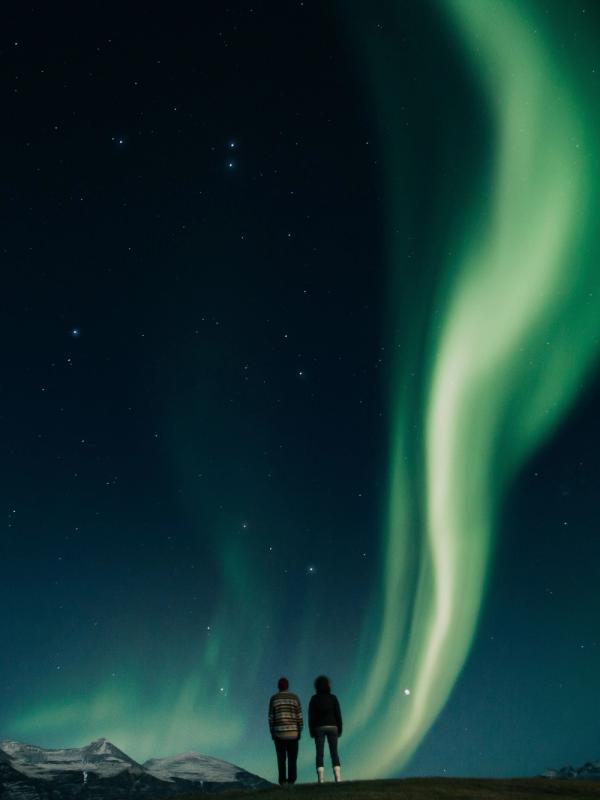
Aurora Adventures: Best Places to See the Northern Lights in Iceland
The Northern Lights are one of the most sought-after natural wonders of the world. Viewing them is a common bucket list item for many, but most do not get a chance to see them in their lifetime. Iceland is home to some of the best aurora activity due to the country's long Northern Lights season and dark skies.
Even though Iceland is a small country, there are plenty of amazing places for you to go to discover them. So when can you view the lights, and where should you go to see them? Keep reading to learn all about the 10 best places to see the Northern Lights in Iceland.
What's the Best Time to See the Northern Lights in Iceland?
Winter is hands down the best time to spot the Northern Lights in Iceland. This would be from October through March. While many may think January would be the best due to its darkness, it sometimes isn’t.
January is the wettest month of the year in Iceland, so cloud cover could be an issue. November and December are some of the best months to find them. The sky is dark, and the days are short, but things are still lively with the holidays. Anytime during the winter, you will have a decent chance; just check the forecast to ensure the sky is going to be clear on the day you adventure off to find the aurora.

Seeing the Northern Lights Outside of Winter
If you are visiting during Spring, which is from April to May, there is still a possibility you will see the Northern Lights. You would need to stay up very late to the wee hours of the morning, though, due to the sun having longer hours.
Seeing the Northern Lights during summer is 99% impossible due to the Midnight Sun, while Autumn brings back greater chances with longer and darker nights.
Best Places to See the Northern Lights in Iceland
Northern Lights can be seen all around Iceland during peak season, but some locations are more spectacular than others when it comes to witnessing this magnificent natural phenomenon.
1. Jokulsarlon Glacier Lagoon & Diamond Beach
While there are many glaciers throughout Iceland, Jokulsarlon is pretty special due to its floating icebergs. The icebergs that travel from Jökulsárlón resemble actual diamonds.
Diamond Beach is a Breiðamerkursandur glacial plain located by the glacier lagoon of Jökulsárlón. The striking black sand stretches over eleven miles, providing many locations for you to hang out and wait for the Northern Lights to appear.
There is also little to no light pollution in this area due to its remote location. So if the Northern Lights do come out, you will have quite the show. The green and purple will shine through the icebergs, making it a photographer's dream!
Random “sneaker waves” can happen here, so be sure to keep your distance and pay attention when on the sandy shore.
Pictures and exploring are still encouraged as it is a relatively safe area most of the time.
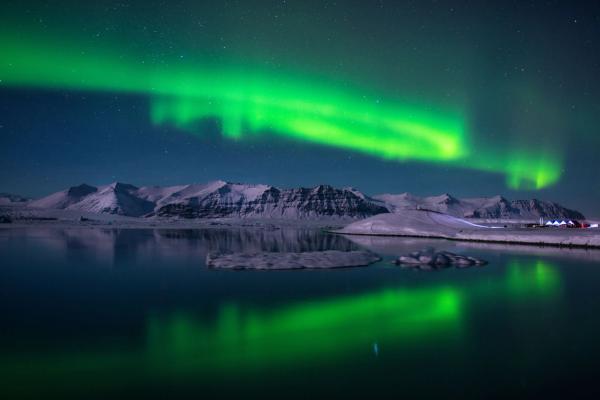
2. Icelandic Countryside
The countryside in Iceland is home to some of the darkest areas. Without the city lights shining nearby, there is not much light pollution. Hella, specifically, is a great place to go to spot the lights.
This small town is home to about 780 people. Due to its location on the Ytri-Ranga River, it was once a source of fresh fish and water. The town was officially established in 1927 when storefronts began to be built.
We recommend staying at Stracta Hotel. They have hot tubs that you can soak in while waiting for the lights to appear. If you are fighting sleep, waiting up for the lights can be a struggle. Luckily Stracta has got you covered, just sign up for their Northern Lights wake-up call. They will alert you of any visible aurora activity during your stay.
If you are feeling adventurous, then take part in their Evening Lava Tunnel Tour. The tour runs for one hour and will bring you through the Lava Tunnel tour during the evening time.
You'll spend your night enjoying the cave, which offers breathtaking views of the stars. This means if the Northern Lights decide to show up, you will have a once-in-a-lifetime view of them from the natural holes inside the cave.
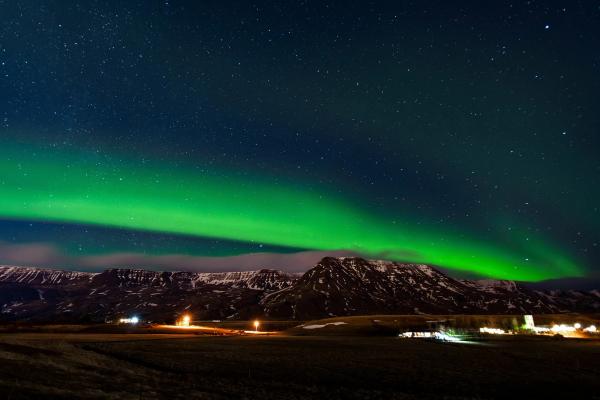
3. Blue Lagoon
Yes, the Blue Lagoon is one of Iceland’s most famous tourist destinations, but did you also know it can be a unique place to view the northern lights?
The Lagoon is set in the heart of nature, surrounded by moss-covered lava fields. There is minimal light pollution near the Blue Lagoon, ideal for viewing the aurora.
Spend your evening soaking in the turquoise-blue healing waters while you wait for the show to begin. You can soak in the Blue Lagoon until midnight until October.
If the lights are planned to make a later entrance, try staying in their luxurious Retreat Hotel. The hotel sits right in the Blue Lagoon, providing majestic views of the steaming water right from your window. You can sit out on your private wooden balcony when the Northern Lights come for a visit.
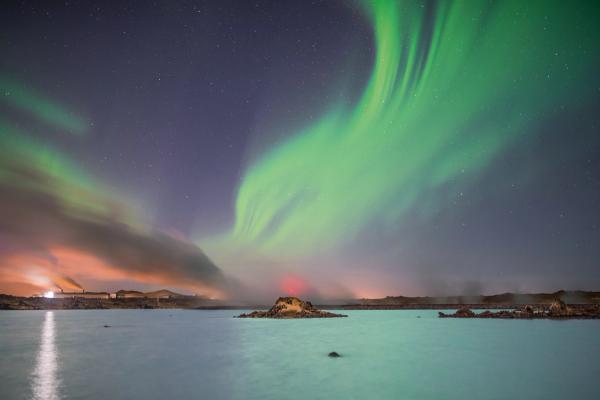
4. Grotta Lighthouse
If you want to capture the Northern Lights close to Reykjavik then Grotta Lighthouse is the place to be. This local hotspot sits right at the tip of the Seltjarnarnes peninsula and is only an eight-minute drive from downtown, so you can rent a small car and enjoy a quick trip.
The lighthouse is picturesque any time of the day, thanks to its rugged black shoreline.
The current lighthouse has been here since 1947 and is still standing strong. It is very tall and vibrant white with a bright red top. Spend some time relaxing on the beach while waiting for the Northern Lights.
This location is also known for its pretty sunsets, making it a double photo opportunity. Since Grotta Lighthouse is conveniently located near downtown Reykjavik, it is a quick drive away if the lights are about to come out.
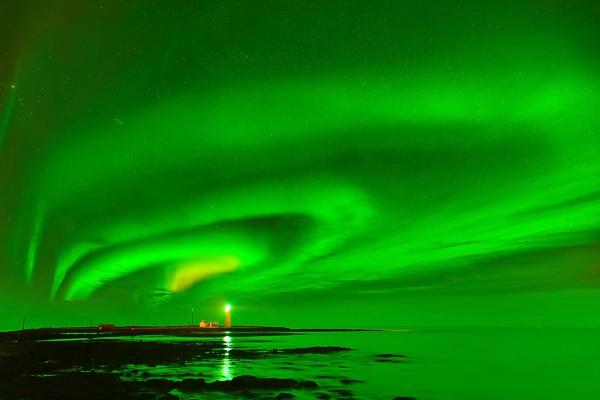
5. Ásbyrgi Canyon
Spend your night camping at “The Shelter Of The Gods,” also known as the Ásbyrgi Canyon. The canyon is a majestic place to seek the Northern Lights due to its remote surroundings. The famous horseshoe-shaped canyon sits inside Vatnajokull National Park.
The cliffs of the canyon are spectacular, sitting at a height of 3300 feet. You will be able to visit where the canyon divides, which is one of the most popular places to photograph.
Since camping is allowed here, you do not have to do much except set up your camp and relax. Before the Northern Lights come out, enjoy the sunset over the canyon, followed by a sky full of twinkling stars.
6. Seljavallalaug Pool
Do you want to soak in a remote Icelandic Hot Spring while admiring the Northern Lights? While it may sound like a dream come true, you actually can at Seljavallalaug Pool.
This unique location can only be accessed by a short hike. The pool has a special past, as it was created back in 1923 to teach the locals how to swim. Then, the Eyjafjallajökull volcano erupted, and ash filled the pool, closing it down.
Thanks to the help of dedicated Icelanders, the ash was eventually cleaned out, and the pool reopened. Today, you can soak it in yourself free of cost.
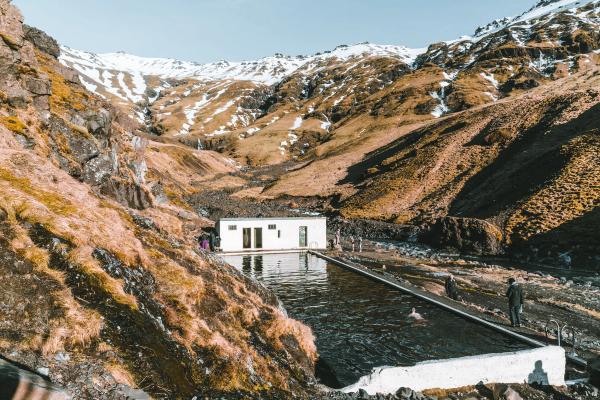
7. The 5 Million Star Hotel
Have you ever wanted to sleep under the stars in luxurious accommodations? If yes then spend a night at The 5 Million Star Hotel in Southern Iceland.
The hotel is quite impressive as the rooms are located in see-through bubbles. This means you can get all snuggled up in bed while the colorful lights dance all around you. To stay overnight in the bubble, you need to book a day tour with Bubble.
After taking you through key locations in South Iceland, such as Seljalandsfoss or Vik's black sand beaches, the overnight tour ends with you relaxing in your private bubble!
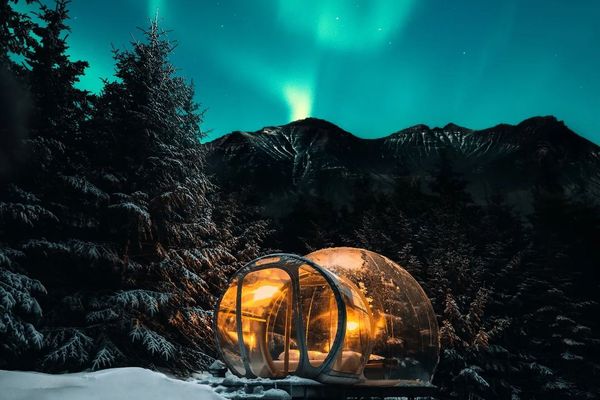
8. Kirkjufell
Viewing the Northern Lights at the most photographed mountain in Iceland is an absolute must.
Kirkjufell Mountain is 1519 feet (463 meters) tall and sits on the coast of Iceland's Snæfellsnes peninsula, near the town of Grundarfjörður, which is only a two-drive from Reykjavik. The mountain is famous for its one-of-a-kind peak and surrounding landscape. It was even featured as Arrowhead Mountain on Game of Thrones.
Kirkjufellsfoss Waterfall cascades in front of the mountain into a lake, providing a majestic photo opportunity. So it is no wonder why travelers come from all over the world to photograph this beast during the Northern Lights.
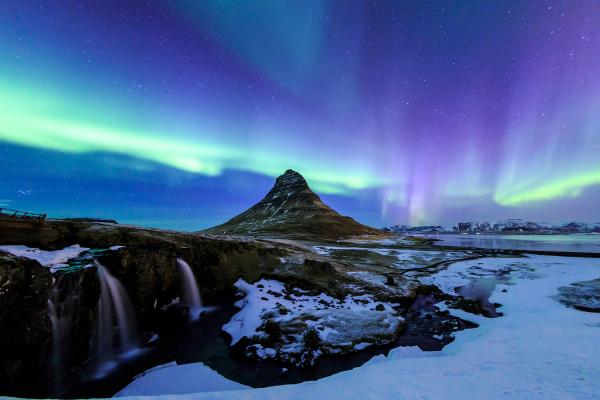
9. Abandoned DC Plane on Sólheimasandur
Back in 1973, there was a DC plane that had a crash landing on the black sand beach of Sólheimasandur. Fortunately, everyone on the plane survived and was later helicoptered to safety.
Today, you can visit the shell of the plane by taking a 2-and-a-half-mile one-way hike to the wreckage site. The location of the DC plane is literally in the middle of nowhere, providing gorgeous views of the Northern Lights.
We recommended taking a sunset hike out to the abandoned DC Plane and enjoying the light ocean mist. Then, wait for the Northern Lights to appear.
You can even begin your 2.6-mile hike back to your car, all while enjoying the views of the Northern Lights. It is truly a win-win, as you get to view a historic site that doubles as an amazing aurora viewing location.
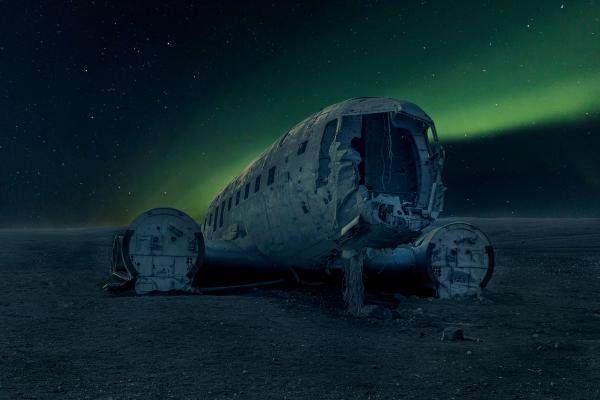
10. Northern Lights On The Sea
You can spot the Aurora from the sea with this Northern Lights Boat Tour. You will hit the waters of Faxaflói Bay after leaving Reykjavík’s Old Harbor.
Admire the city lights in the distance as the boat sails further away from the light pollution of the city. Once you do, get ready to admire the dazzling colors of the northern lights as they reflect off of the water. The boat has a warm indoor cabin with a bar for you to indulge in if you wish.
Your local guides will be more than informative and will answer any questions you may have about the Aurora. They will even teach you about folklore and mythical stories about the Northern Lights.
If you do not see the lights the tour company will provide you with a voucher to use for another sailing.
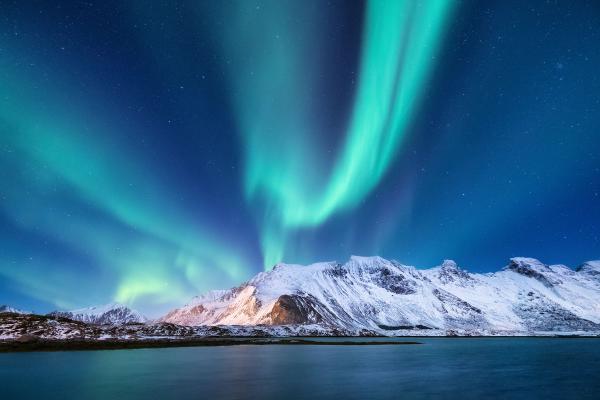
Is there a way to know when the Northern Lights will appear?
No, the lights are unpredictable. But there is also an app you can download on your phone to assist you in tracking Aurora's Activity.
Download the Hello Aurora App, which will help you know when the lights are going to be visible.

No Place is Bad to see the Northern Lights in Iceland
Even though Iceland might seem small, the chances to catch the Northern Lights here are anything but! Whether you're relaxing in the Blue Lagoon, hiking to the abandoned DC plane, or camping under the stars at Ásbyrgi Canyon, there are so many incredible spots to experience the magic. Winter is your best bet for catching the lights, but with some luck (and good timing), you might even see them in the shoulder seasons. No matter where you decide to go, seeing the Northern Lights in Iceland is bound to be an unforgettable, one-of-a-kind adventure!
